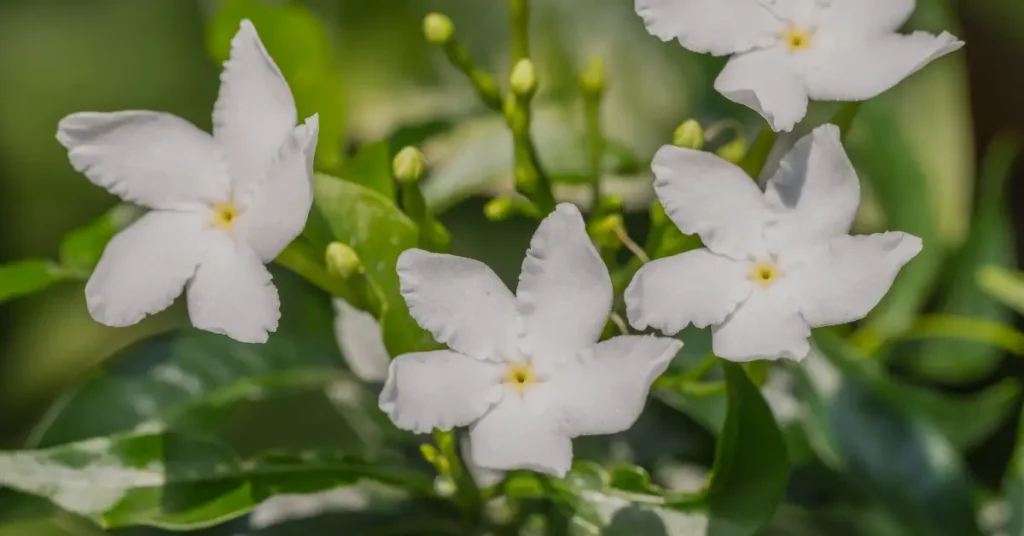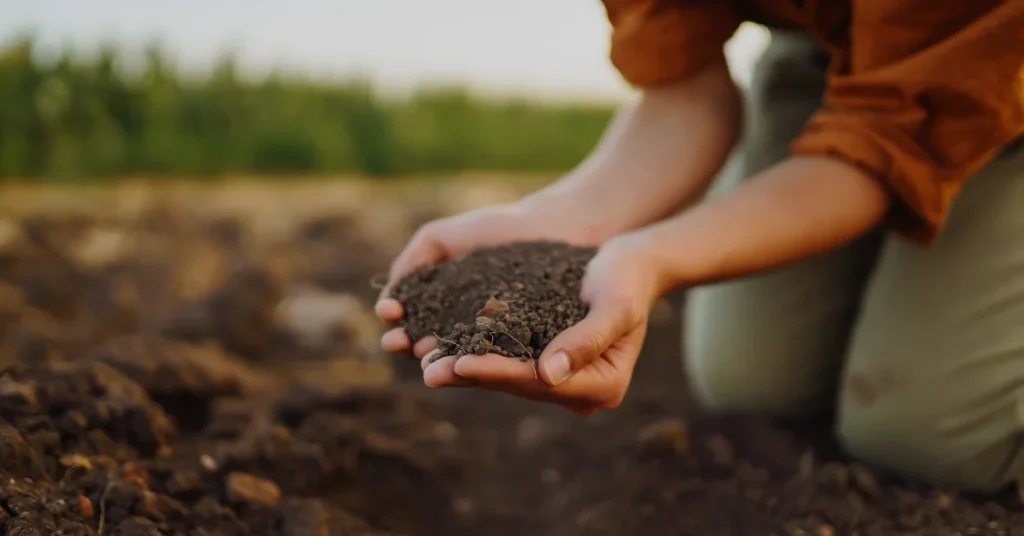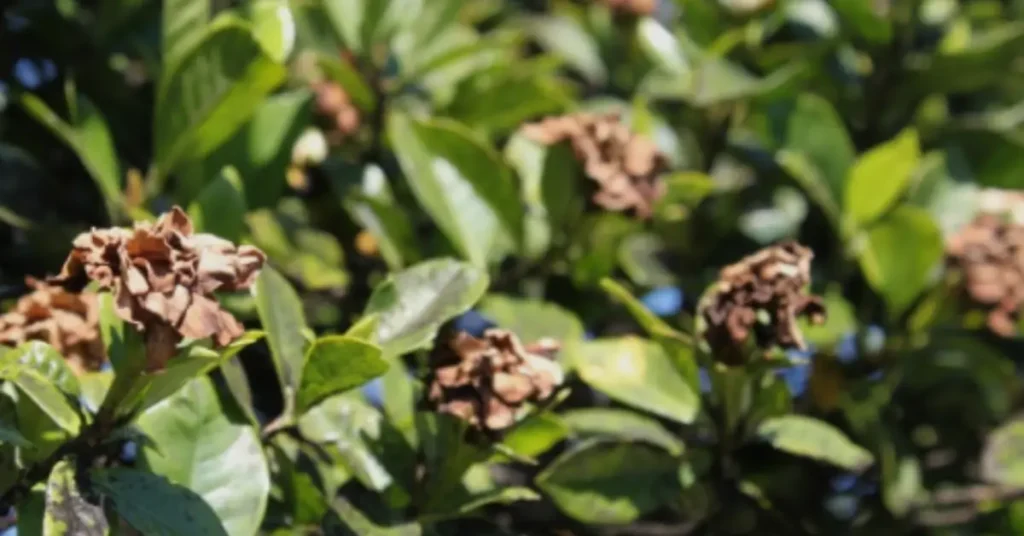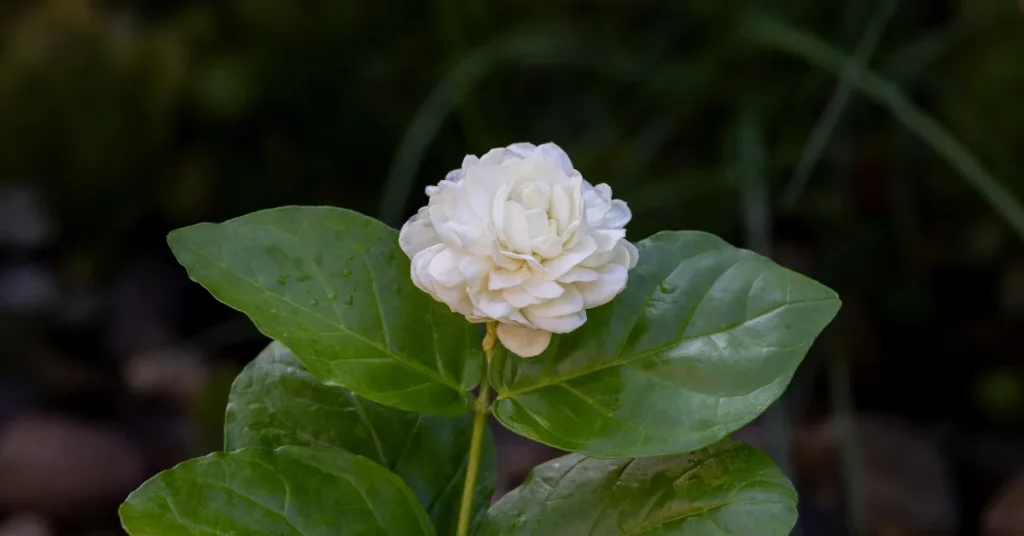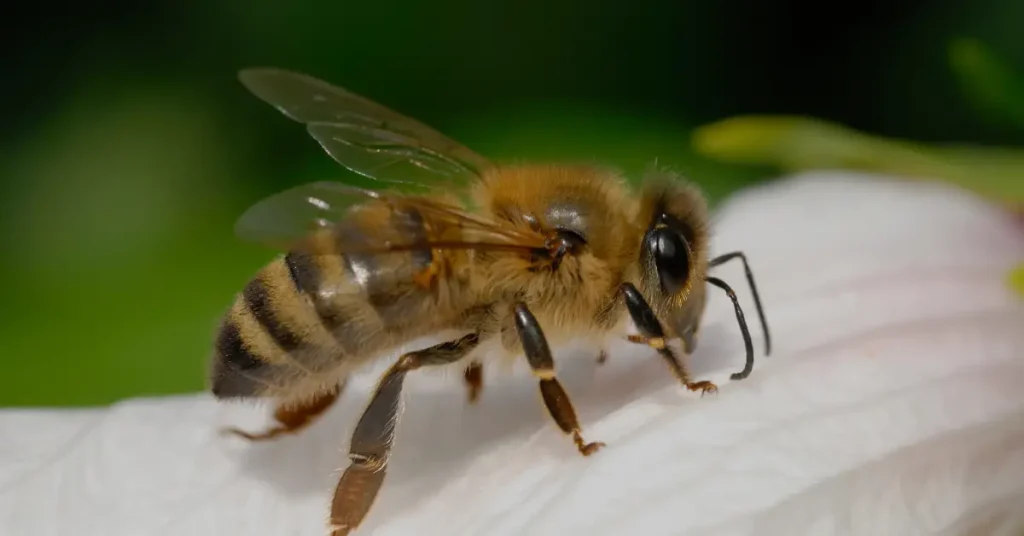How To Protect Jasmine in Winter: 5 Recommendations
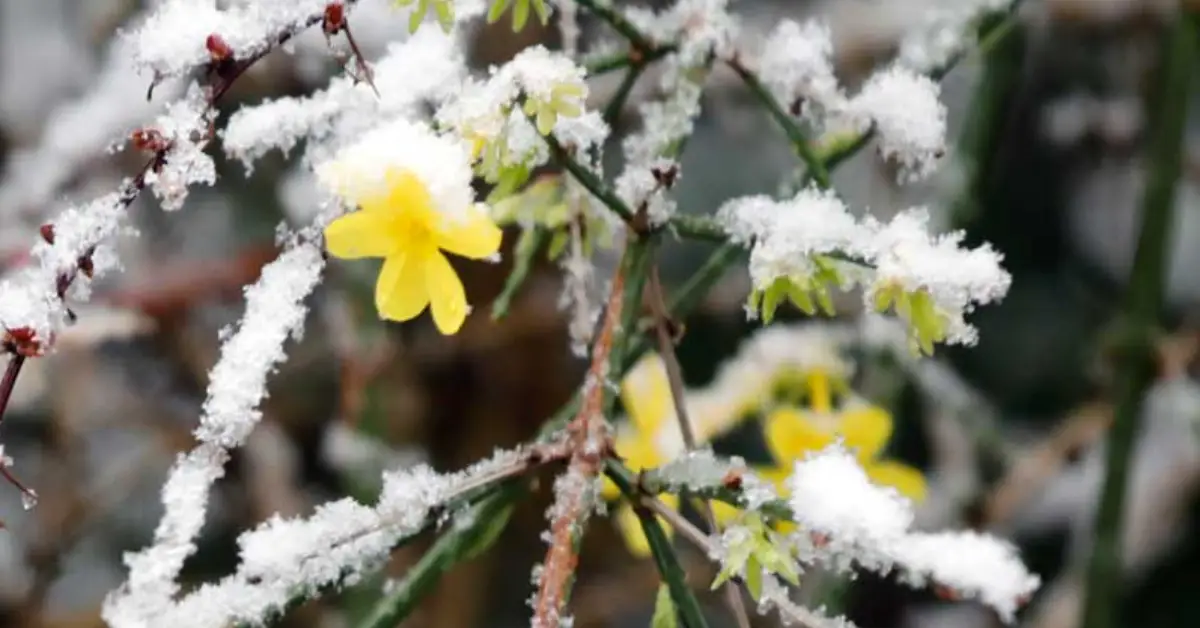
Protecting flowers in winter is important to keep them safe from the cold weather. During winter, temperatures drop, and frost can harm flowering plants. Without protection, flowers may wilt or even die in the cold.
Gardeners dont want to see dying jasmine plants and one strong reason is their strong scent. For the gardeners who are just planning to plant jasmine plants in their garden, I do recommend to sow “Winter Jasmine” (Jasminum Nudiflorum).
In this article, i am going to share how to protect jasmine in winter, suitable and less suitable winter varieties and five recommendations.
How To Protect Jasmine in Winter
Identify Jasmine Species
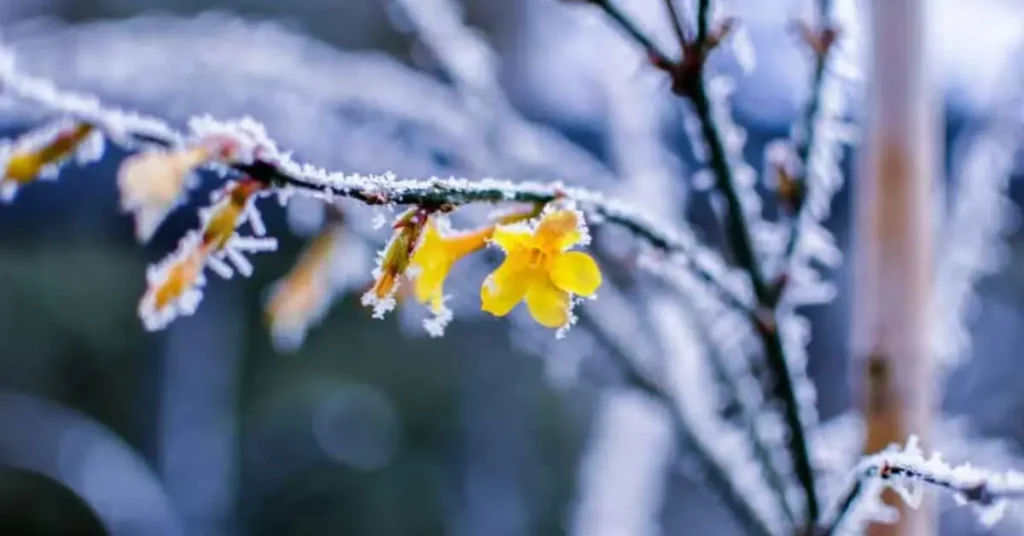
Simple table categorizing jasmine species based on their winter hardiness:
| Winter Hardy Jasmine Species | Less Winter Hardy Jasmine Species |
|---|---|
| Winter Jasmine (Jasminum nudiflorum) | Star Jasmine (Trachelospermum jasminoides) |
| Common Jasmine (Jasminum officinale) | Arabian Jasmine (Jasminum sambac) |
| Primrose Jasmine (Jasminum mesnyi) | Italian Jasmine (Jasminum humile) |
The United States Department of Agriculture (USDA) Plant Hardiness Zone Map divides the United States into 13 distinct hardiness zones based on average annual minimum winter temperatures. These zones help gardeners and growers select plants that are suitable for their specific climate conditions. Here are the USDA hardiness zones:
- Zone 1: Minimum temperatures below -50°F (-45.6°C)
- Zone 2: Minimum temperatures between -50°F and -40°F (-42.8°C and -40°C)
- Zone 3: Minimum temperatures between -40°F and -30°F (-40°C and -34.4°C)
- Zone 4: Minimum temperatures between -30°F and -20°F (-34.4°C and -28.9°C)
- Zone 5: Minimum temperatures between -20°F and -10°F (-28.9°C and -23.3°C)
- Zone 6: Minimum temperatures between -10°F and 0°F (-23.3°C and -17.8°C)
- Zone 7: Minimum temperatures between 0°F and 10°F (-17.8°C and -12.2°C)
- Zone 8: Minimum temperatures between 10°F and 20°F (-12.2°C and -6.7°C)
- Zone 9: Minimum temperatures between 20°F and 30°F (-6.7°C and -1.1°C)
- Zone 10: Minimum temperatures between 30°F and 40°F (-1.1°C and 4.4°C)
- Zone 11: Minimum temperatures between 40°F and 50°F (4.4°C and 10°C)
- Zone 12: Minimum temperatures between 50°F and 60°F (10°C and 15.6°C)
- Zone 13: Minimum temperatures above 60°F (15.6°C)
5 Fundamental Recommendations
- Shifting Indoor
- Shelter and Protection
- Layer of Mulch
- Pruning
- Adequate Watering Before Frost
Shifting Indoor
Growing Jasmine plants in pots makes it simpler to move them indoors when it gets cold.
However, inside, the air might be too dry and they might not get enough sunlight, which could lead to them losing leaves or even dying. So you need to be careful while shifting them inside. Here I am giving you some suggestions which will definitely be efficacious for you.
- Prepare Plant for Indoor Shifting: Before shifting it, prepare it for adjusting indoor. For this purpose, place the plant daily for a few hours indoor.
- Appropriate Placement: Position them in a well light area. Ensure to place them away from heating vents and drafty windows.
- Adequate Temperature: Indoor jasmine plants usually perform well in temperatures ranging from 60°F to 75°F (15°C to 24°C). Give them a bit cooler temperature at night.
- Humidity: Indoor jasmine plants generally prefer moderate to high humidity levels to thrive and produce healthy foliage and flowers. Aim for a relative humidity level of around 50% to 70% for indoor jasmine plants. Use a hygrometer to monitor the humidity levels.
How To Enhance Humidity?
Place indoor jasmine plants together with other houseplants (Peace Lily,Boston Fern, Spider Plant English ivy etc.).
Use a room humidifier.
Place a shallow tray filled with water and pebbles near the jasmine plant.
Shelter and Production
As I’ve Jasmine plants in my garden, I use shelters for their protection from winter. Here I am coming up with some easy to carry options:
- Install a windbreak or build a Barrier: This is for the regions where there are frequent cold winds. You can choose among wooden stakes, burlap, frost cloth, or plastic sheets can be effective options. The windbreak or barrier should be tall enough and long enough to effectively block the wind. It should extend above and beyond the height and width of the jasmine plant to provide adequate protection. Position the windbreak or barrier on the windward side of the jasmine plant.
If you are going to choose the cover or cloth, make sure it’s not opaque as jasmine needs consistent light.
What If You Have Heavy Pots?
Provide a shield for them with plastic to simulate a greenhouse environment. It works as a portable shelter for them. Put up that shelter on expected frost evening and remove it on daytime.
Layer of Mulch
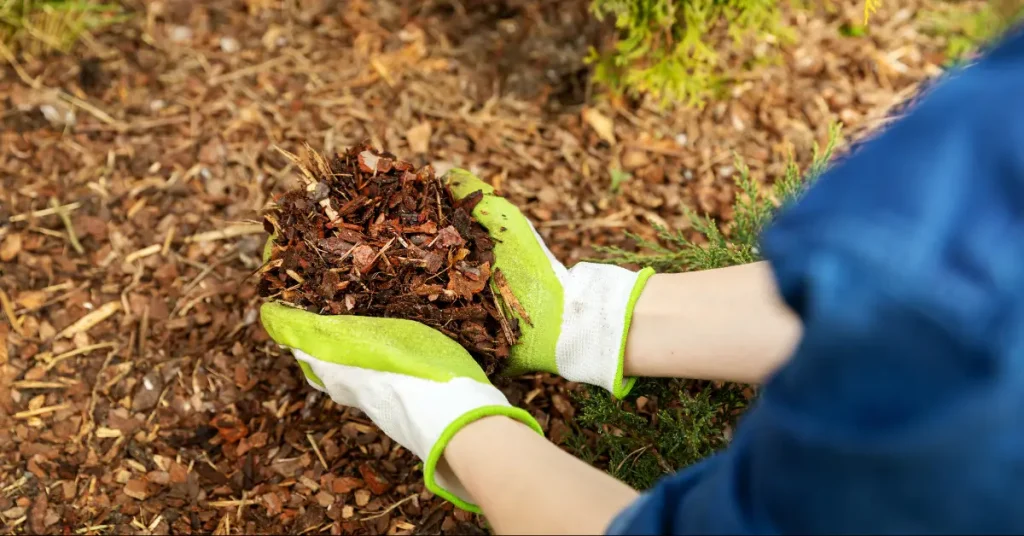
A good tip for taking care of your outdoor jasmine in winter is to cover the area around the plant with a layer of mulch, about 2-3 inches thick before winter begins.
It helps the plant to get enough water during cold months. It also prevents damage from freezing-thaw cycles caused by brief temperature rises. Additionally, it stops weeds from competing for water, nutrients, and soil moisture during winter.
When using mulch, you can pick from different materials like straw, bark, leaves, or shredded wood. If you go with straw or bark, spread a 2-3 inch layer before frost sets in.
Pruning
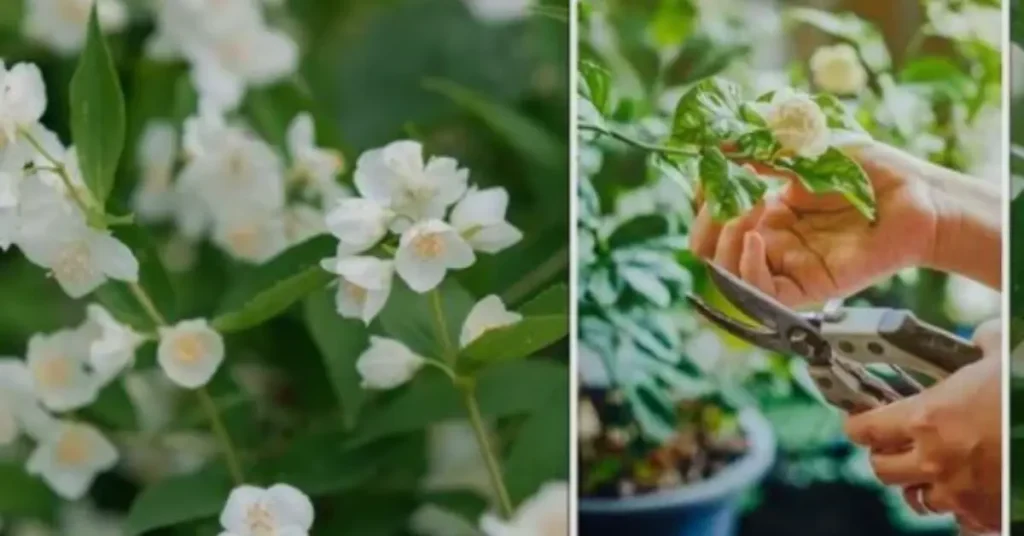
It’s important to remember that jasmine typically thrives from spring to autumn. During winter, it enters a period of dormancy.I suggest you to prune lightly before winter. Just focus on removing any dead or diseased branches and lightly shaping the plant.
Adequate Watering Before Frost
Frost can make it difficult for the roots to absorb water. By watering the jasmine before frost, you ensure that the plant has sufficient moisture to withstand the freezing temperatures. moist soil acts as a natural insulator, protecting the roots from the freezing temperatures. Adequate watering before frost helps maintain soil moisture, which in turn helps keep the roots insulated and protected.
Final Words
By implementing measures such as shifting plant pots, mulching, providing shelter, pruning and adequate watering, gardeners can effectively protect their jasmine plants from the harsh winter.
Remember that caring for jasmine plants in winter varies based on the plant type, your local climate, and whether it’s indoors or outdoors.

I am Yasir Riaz, an Agronomist for more than a decade. Helping local farmers and Gardeners to improve their crops and Gardens and overall productivity. In addition to my work in agriculture, I have also delved into the digital world as an SEO writer and blogger. Through my blog, I aim to educate and inspire others about the Chameli Flower (Jasmine).

